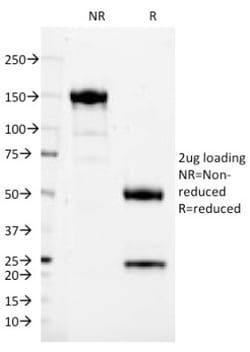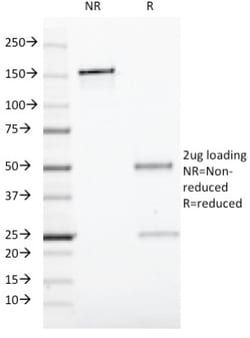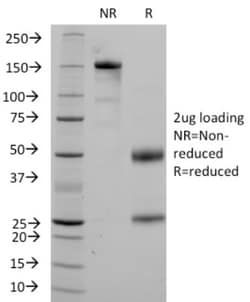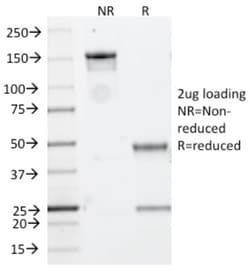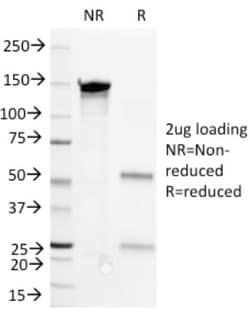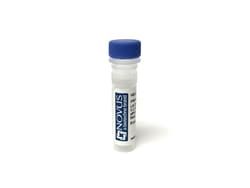CD37 Antibody (IPO-24), Novus Biologicals™
Mouse Monoclonal Antibody
Manufacturer: Fischer Scientific
The price for this product is unavailable. Please request a quote
Antigen
CD37
Concentration
0.2 mg/mL
Applications
Flow Cytometry, SDS-Page, Immunofluorescence
Conjugate
Unconjugated
Host Species
Mouse
Research Discipline
Cellular Markers, Immunology
Formulation
10mM PBS and 0.05% BSA with 0.05% Sodium Azide
Gene ID (Entrez)
951
Immunogen
Spleen cells of a patient with hairy cell leukemia
Primary or Secondary
Primary
Content And Storage
Store at 4C.
Clone
IPO-24
Dilution
Flow Cytometry 0.5 - 1 ug/million cells in 0.1 ml, SDS-Page, Immunofluorescence 0.5 - 1.0 ug/ml
Classification
Monoclonal
Form
Purified
Regulatory Status
RUO
Target Species
Human
Gene Alias
CD37 antigentetraspanin-26, CD37 molecule, cell differentiation antigen 37, GP52-40, leukocyte antigen CD37, MGC120234, Tetraspanin-26, Tspan-26, TSPAN26leukocyte surface antigen CD37
Gene Symbols
CD37
Isotype
IgG2b κ
Purification Method
Protein A or G purified
Test Specificity
Recognizes a protein of 33-55kDa, identified as CD37 (Workshop V; Code CD37.7). CD37 is strongly expressed on normal and neoplastic mature (sIg+) B-lymphocytes. In B-cell ontogeny, CD37 appears after the pre-B-cell stage, is maintained during peripheral B-cell development and is lost upon terminal differentiation into plasma cells.1 CD37 is also present, at low densities, on resting and activated T cells, neutrophils, monocytes, and some myelomonocytic leukemia cells. It is absent from platelets, erythrocytes. CD37 is a member of a family of tetraspan transmembrane proteins, including CD9, CD53, CD63, CD81, and CD82. It associates other tetraspan transmembrane proteins and MHC class II molecules to form a large complex at the surface of B cells and play a role in signal transduction. CD37 is a valuable and stable marker for peripheral mature B-cells and corresponding malignancies like B-cell chronic lymphocytic leukemia (B-CLL), hairy cell leukemia (HCL), and all types of B-cell non-Ho
Description
- Ensure accurate, reproducible results in Flow Cytometry, Immunofluorescence CD37 Monoclonal specifically detects CD37 in Human samples
- It is validated for Flow Cytometry, Immunocytochemistry/Immunofluorescence, Functional, Immunofluorescence.
